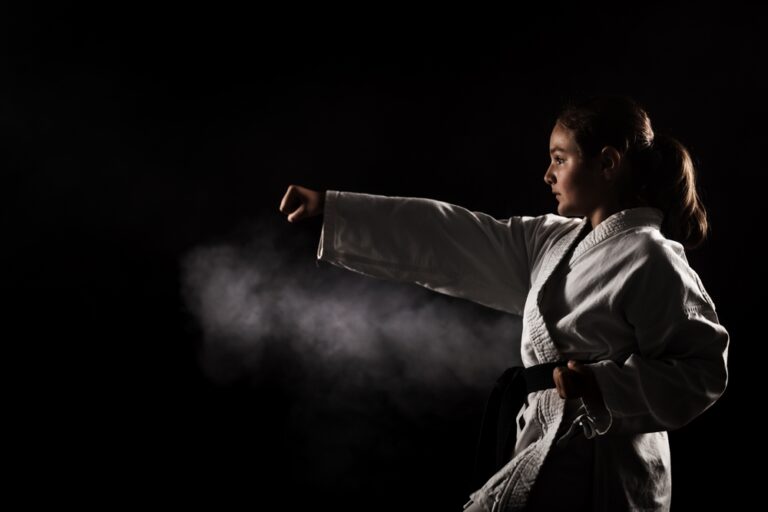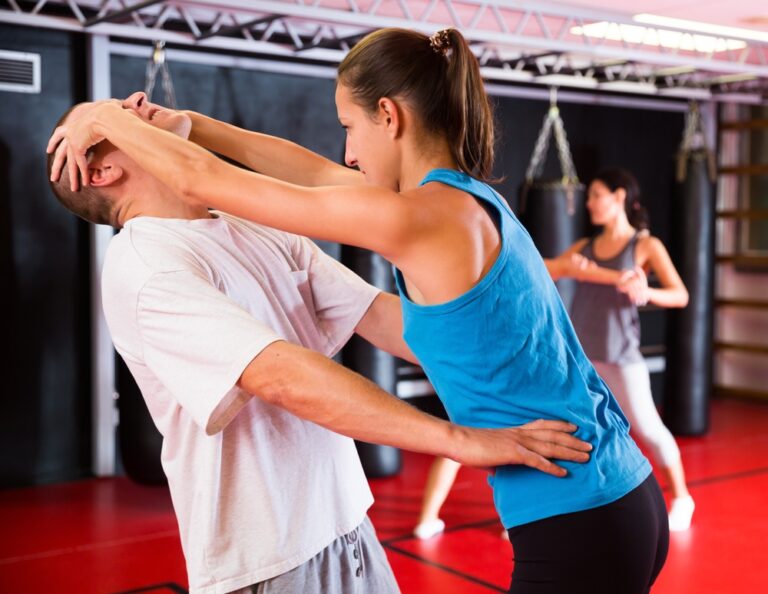In the world of real self-defense, the fight doesn’t start with punches or kicks—it starts with situational awareness.
If you don’t detect the threat early, you’ve already given the attacker the upper hand. And let’s be honest: Most people walk around in a daze—phone in hand, earbuds in, totally unaware. That’s called Condition White—and that’s where predators thrive.
For college students, mastering situational awareness is your best defense. Whether you’re walking across campus at night, attending a party, or navigating a crowded city street, being alert is what keeps you safe.
What Is Situational Awareness?
Situational awareness means paying attention to your environment, recognizing potential threats, and responding before it’s too late. It’s not about being paranoid—it’s about being prepared and proactive.
When practiced correctly, it helps you:
– Avoid dangerous situations
– Detect threats early
– Escape before physical confrontation is necessary
The Self-Defense Triangle: Awareness of Environment, People, and Self
1. Know Your Environment
Your surroundings matter. Whether you’re in a dorm, lecture hall, or off-campus bar, scan the space for:
– Exits – Always know how you’d leave in an emergency.
– Lighting – Stay in well-lit areas; avoid shadows.
– Obstacles – Know what might block your escape.
– Concealment – Identify places an attacker could hide.
This is called environmental scanning, and it’s a cornerstone of Krav Maga self-defense training.
2. Read Human Behavior Like a Pro
Predators give off signals before they act. Pay attention to:
– Repeated glances or stalking behavior
– Attempts to isolate you
– Unnatural calmness or tension in their body language
– Odd fixation on you or your belongings
These are known as pre-attack indicators, and being able to spot them is critical for threat detection and prevention.
3. Check Your Internal State
You can’t defend yourself if you’re running on fumes. Ask yourself:
– Am I distracted?
– Am I tired or impaired?
– Am I angry, fearful, or emotionally charged?
Your mental state directly affects your reaction time and decision-making. You must be in Condition Yellow—relaxed but alert.
Understanding the Color Conditions of Awareness
Jeff Cooper’s color code is a proven tool in the self-defense world:
– Condition White – Unaware. Distracted. Easy target.
– Condition Yellow – Aware. Observant. Ready to act.
– Condition Orange – Threat identified. Planning response.
– Condition Red – Immediate danger. Time to move or fight.
The goal? Live in Yellow. Be alert, scan your environment, and trust your gut. Most threats can be avoided if you detect them early.
Campus Safety Tips for College Students
As a college student, your daily routine puts you in varied environments. Here’s how to apply situational awareness to real life:
– Walk with purpose. Head up. Eyes scanning. Phone away.
– Avoid headphones at night. You need all senses active.
– Stick to lit paths. Don’t walk alone in dark areas.
– Trust your instincts. If it feels off, it is.
– Know your exits. Always have a plan to leave.
– Limit predictable routines. Vary your route and schedule to stay unpredictable.
Why Situational Awareness Matters in Krav Maga and Real Life
At Krav Maga Personal Safety, we train not just for the fight, but to avoid it entirely. That starts with awareness. The more you understand your environment, the people around you, and your own readiness, the harder it is for anyone to surprise you.
Remember:
An attacker’s biggest weapon is surprise.
Your best defense is awareness.
Want more tips on real-world self-defense? Explore our blog and follow Krav Maga Personal Safety/Corporate Krav Maga for expert strategies designed for college students, professionals, and everyday civilians who want to stay safe and in control.




